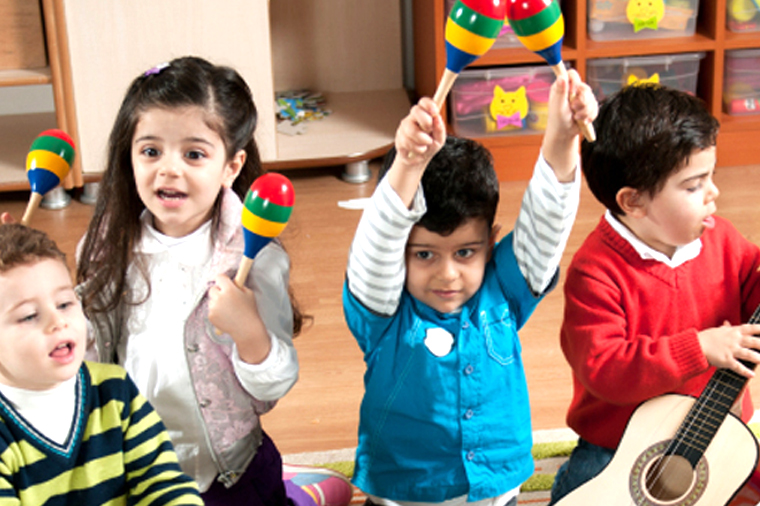“Music gives a soul to the universe, wings to the mind, flight to the imagination and life to everything.” – Plato
How many of you think, “Oh I can’t sing.”? The good news is you can freely share both art forms when you interact with children. Young children appreciate any adult who is willing to get down on their level and sing and dance with them…. no matter how they sound or move! In fact, one of the best ways to get children’s attention is to start to sing or move. They are thrilled and fascinated to see an adult doing these things with them. Your participation and spontaneous joy of music will support children in their own free exploration and expression.
BE INSPIRED
One of the first steps is to experiment with music and movement yourself. Yes…You! After all it is difficult to encourage children’s free expression if you feel restrained or blocked yourself. There are some simple ways you can do this without feeling self-conscious. Sing along with the car radio, or better yet, make up sounds to go with the car sounds you hear, and then spin them into a tune. Many of us sing in the shower, but usually we sing songs we know. Stop and listen to the shower for a minute. Does the sound of the water make a tune? Try humming along with it. Create a tune for cooking dinner, going shopping, walking. You might be surprise how quickly these little “songs” come to mind once you let yourself get started.
NOTICE AND EXPLORE SOUND
Take time to notice the sounds in your life. You already make sounds everyday. Listen and extend them in the same ways children do. For example, do you make a sound when you pick something up? How about when you sit down quickly? Do you make a sound when you are thinking? Repeat it, add to it, and see where it goes. Soon you’ll be making more sounds and a little phrase or tune will emerge. This is a beginning of your own spontaneous music!
CHILDREN NATURALLY MAKE SOUNDS AND MUSIC.
One day in my preschool classroom I was happily looking around at the children involved in different learning centers and appreciating the busy “hum” of children actively working and playing. Then I noticed a new sound emerging. Faint at first, it begins to build to full voice. I am happy to hear that someone is singing! At the clay table I hear a musical “Push, push push; squish, squish, squish; pat, pat, pat.” One child is adding a song to her movements and eventually other children notice and join in! At first the original “songwriter” leads, but the other children soon add their own creative energy to make a glorious, spontaneous composition!
SPONTANEOUS MUSIC AND MOVEMENT IS LEARNING
This particular kind of music making is an important part of early childhood learning and growing. Rather than telling children what to do or how to do it – rather than guiding their experience by saying “Let’s make music like a bird,” or, “Sound like a train” – adults can provide support setting in which young children feel free to invent their own sounds tunes and lyrics. Based on their own ideas, children will own the experience and them music! You will be building essential creative thinking and problem solving skills that apply to all areas of learning. Of course, children enjoy singing familiar songs, but it is equally important to provide them with opportunities that encourage their individual spontaneity. These two types of music experiences come from different sources. When we teach children music, we use external stimuli such as a new song, or finger play. A child hears the song and learning through repeated experiences. On the other hand, spontaneous music is internal, coming from a personal spark that urges the child to put his or her feelings, thoughts and actions into a song. Whether it is the delight of spotting a red bird or gliding high on a swing or a rush of feeling about an upcoming party, the stimulus ignites self-creation. This rich form of self-expression is part of what children do every day. It is our job to support and celebrate this beautiful and meaningful self-created music!

